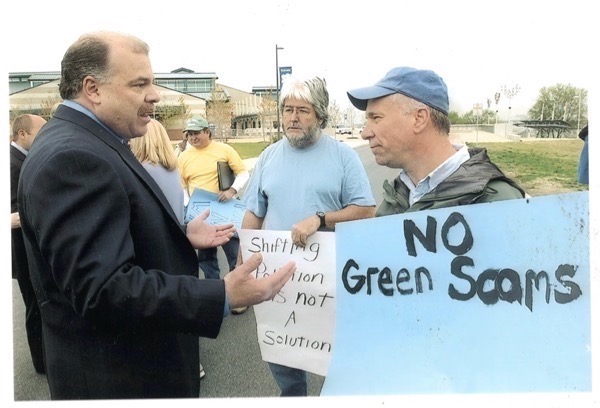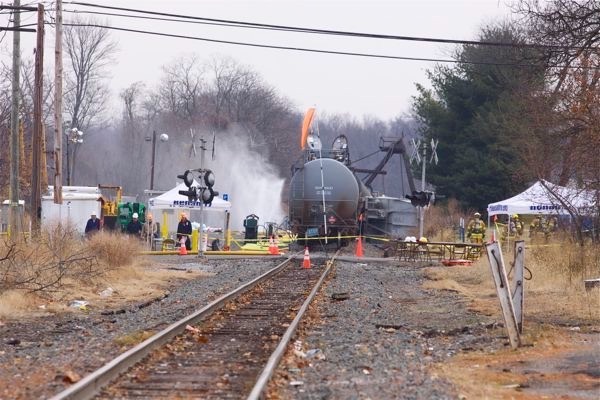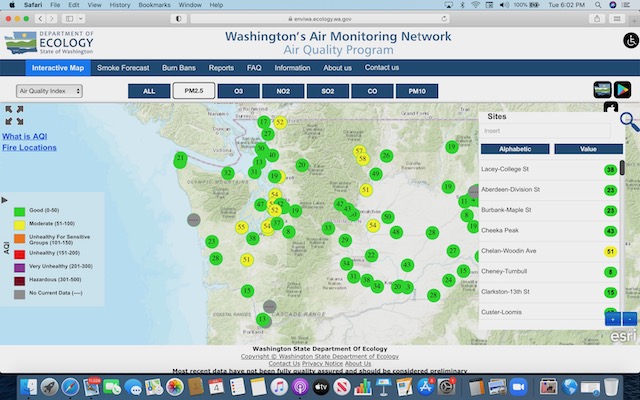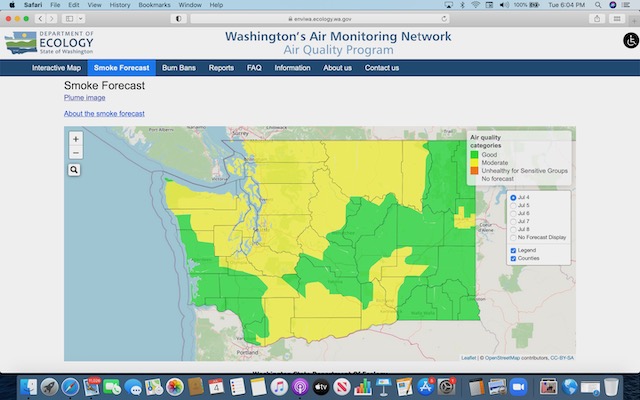
“The Handmaiden’s Garden” – Main Street, Sackets Harbor, NY
Striking Down Student Debt Relief Latest Effort To Dismantle “The Administrative State”
The Handmaiden Justice Asserts The “Major Questions” Doctrine With Childish Drivel
Prior Attack On EPA Climate Regulation Forms Foundation Of Majority Opinion
Did they get you to trade
Your heroes for ghosts?
Hot ashes for trees?
Hot air for a cool breeze?
Cold comfort for change?
Did you exchange
A walk-on part in the war
For a lead role in a cage? ~~~ Pink Floyd (1975)
For a little theater of the absurd, consider that the US Supreme Court’s decision that struck down the Biden student debt relief plan was based on the HEROES Act (from the Kagan dissent @ p. 14)
A bit of background first, to give a sense of where the HEROES Act came from. In 1991 and again in 2002, Congress authorized the Secretary to grant student-loan relief to borrowers affected by a specified war or emergency. The first statute came out of the Persian Gulf Conflict. It gave the Secretary power to “waive or modify any statutory or regulatory provision” relating to student-loan programs in order to assist “the men and women serving on active duty in connection with Operation Desert Storm.” §§372(a)(1), (b), 105 Stat. 93. The next iteration responded to the impacts of the September 11 terrorist attacks.
HEROES, anyone?
I, I will be king
And you, you will be queen
Though nothing will drive them away
We can beat them just for one day
We can be heroes just for one day. ~~~ David Bowie (1977)
There are No HEROES to be found in this decision, unless one is a right wing Federalist Society ideological warrior (see US Senator Whitehouse “The Scheme”).
The WSWS explains:
The class character of the decision is obvious: an executive action by the federal government to bail out wealthy bank depositors is constitutional, but not a limited action to help debt-burdened students.
The decision represents the latest right wing corporate effort to dismantle “the Administrative State”.
(BTW, that attack is not limited to Washington DC and the Republican Party, see:
In a March 13, 2011 post, I wrote:
“The legislation involved (A2486 2R) (Burzichelli, D-Oil) would codify the Christie federal consistency policy – and go even further by prohibiting proposal of rules “not specifically authorized” by the legislature, a provision the sponsor stated would require legislative approval of more stringent rules prior to agency proposal. This would put the legislature in charge of rulemaking, a radical rollback in the modern framework of Administrative and environmental law, which are founded on a broad delegation doctrine, where the Legislature delegates power to executive branch agencies to use their scientific expertise to fill in the details of complex legislation.”
Although I didn’t research it, I suspect that this was a ALEC bill.
Getting back to the US Supremes, based on a close reading of the majority decision, concurring opinion by the Handmaiden Justice, and dissent by Justice Kagan, I want to make 3 points you are not likely to read in the corporate news coverage.
1. The Prior Attack On EPA Climate Regulation Forms Foundation Of Majority Opinion
Judge Roberts wrote the majority opinion that received 6 votes.
It was an illegitimate and deeply ideologically driven decision that was masked by an attempt to suggest mere statutory interpretation. Just like the recent decision to over-ruled US EPA’s Clean Water Act regulations.
More importantly, Justice Roberts relied upon and repeatedly cited the Court’s recent decision that struck down US EPA’s proposed climate regulations.
For anyone paying attention, Justice Roberts laid his ideological cards right out on the table:
The question here is not whether something should be done; it is who has the authority to do it. Our recent decision in West Virginia v. EPA involved similar concerns over the exercise of administrative power. 597 U. S. ___ (2022). That case involved the EPA’s claim that the Clean Air Act authorized it to impose a nationwide cap on carbon dioxide emissions. Given “the ‘history and the breadth of the authority that [the agency] ha[d] asserted,’ and the ‘economic and political significance’ of that assertion,” we found that there was “‘reason to hesitate before concluding that Congress’ meant to confer such authority.”
That text is highly revealing and highly significant, as it suggests a continuing expansion of the Court’s aggressive ideological project to “dismantle the Administrative State”.
This project makes the Court’s previous attack on FDR’s New Deal seem like Childs play (but don’t expect any “switch in time saves nine” under Biden and Co.).
Things are only going to get far worse, unless either a radical political revolution occurs, or the Democrats in Congress decide enough is enough and pack the Court, limit its jurisdiction, and mandate ethics standards (the latter is extremely unlikely. I mention it only for logical reasons because it is a possible solution).
That kind of Court reform prospect is not even remotely on the radar, not even in the RFK, Jr. and Cornel West “radical insurgent” campaigns or any of the progressive and liberal “think tanks” and the legal and environmental advocacy organizations. That’s why I recently called for a new “Powell Memo”.
2. The Concurring Opinion By The Handmaiden Justice

I am not going to even dignify what Justice Barrett wrote. It should be not only denounced, but mocked. You can go and read it for yourself.
But I will make two quick observations on the implications of that self absorbed, childish and ideological rant.
First, Justice Barrett actually offered up literally childish hypotheticals based on a merchant – clerk and a parent – baby-sitter relationship (seriously, she wrote a hypothetical about the power relationship between a a parent and a baby-sitter. Has that ever been done before in the Court’s history?)
In doing so – in what also could be unprecedented – she actually cited her own “scholarship” – EIGHT FUCKING TIMES!
Second, she laid the foundation for a broader and more aggressive enforcement of the “major questions” doctrine and a revitalization of the pre-New Deal Robber Barron Gilded Age “non-delegation doctrine” (the data show billionaire greed and concentration of wealth are even worse today).
(And why not? Republican led States already have rolled back child labor protection laws.)
The Harvard Law Review explains:
According to progressive scholars, American judges steeped in laissez-faire economic theory, who identified with the nation’s capitalist class and harbored contempt for any effort to redistribute wealth or otherwise meddle with the private marketplace, acted on their own economic and political biases to strike down legislation that threatened to burden corporations or disturb the existing economic hierarchy. In order to mask this fit of legally unjustified, intellectually dishonest judicial activism, the progressive interpretation runs, judges invented novel economic “rights” – most notably “substantive due process” and “liberty of contract” – that they engrafted upon the Due Process Clause of the Fourteenth Amendment.
She is more dangerous that anyone imagined.
3. The Liberal Dissent Is Lame And Fails To Engage And Expose The Right Wing Agenda
Justice Kagan begins her dissent by spending a lot of time on an attack on the “standing” issue. That only provides cover for Chief Justice Roberts, who relied on a prior decision on AMTRAK and First Amendment free speech rights and government accountability, to provide an expansive and liberal reading of the law and access to the courts.
In doing so, Kagan managed to make Roberts look like a good guy traditional liberal.
Why the hell are so called liberals advocating narrow “standing” doctrines and limiting access to the federal courts? This hypocrisy is shameful and embarrassing.
Kagan then goes on to spend an inordinate amount of time debunking Chief Justice Roberts’ statutory interpretation.
Kagan clearly understands the illegitimate ideological project that is being advanced, but her dissent merely hints at and teases us (emphases mine):
The tell comes in the last part of the majority’s opinion. When a court is confident in its interpretation of a statute’s text, it spells out its reading and hits the send button. Not this Court, not today. This Court needs a whole other chapter to explain why it is striking down the Secretary’s plan. And that chapter is not about the statute Congress passed and the President signed, in their representation of many millions of citizens. It instead expresses the Court’s own concerns over the exercise of administrative power. […]
The new major-questions doctrine works not to better understand— but instead to trump—the scope of a legislative delegation. ….
And that is a major problem not just for governance, but for democracy too.
BOOM! Yup, we have a major problem here.
Kagan explains:
Last Term, for example, the majority thought the trouble with the Clean Power Plan lay in the EPA’s use of a “long-extant” and “ancillary” provision addressed to other matters. West Virginia, 597 U. S., at ___ (slip op., at 20). Before that, the majority invalidated the CDC’s eviction moratorium because the agency had asserted authority far outside its “particular domain.” Alabama Assn. of Realtors, 594 U. S., at ___ (slip op., at 6). I thought both those decisions wrong.
But then, remarkably, in a footnote, Kagan actually praises the Handmaiden’s Justice:
3 The nature of the delegation here poses a particular challenge for JUSTICE BARRETT, given her distinctive understanding of the major- questions doctrine. In her thoughtful concurrence, she notes the “importance of context when a court interprets a delegation to an administrative agency.” Ante, at 2 (emphasis in original). I agree, and have said so; there are, indeed, some significant overlaps between my and JUSTICE BARRETT’s views on properly contextual interpretation of delegation provisions. See West Virginia, 597 U. S., at ___–___ (dissenting opinion)
WTF! Kagan just implied support for the Court’s stripping of EPA regulatory authority in the West Virginia case! These are the kind of “collegial” footnotes we don’t need!
But Kagan, apparently bound by Court decorum and liberal conflict avoidance, fails to frontally expose and attack this project on equally aggressive ideological grounds.
Instead, Justice Kagan, constrained by decorum and the liberal ideological avoidance of intellectual pugilism, pulls punches, drifting off into standard judicial rhetoric and drifts off into standard liberal equanimity:
But this Court? It is, by design, as detached as possible from the body politic. That is why the Court is supposed to stick to its business—to decide only cases and controversies (but see supra, at 3–13), and to stay away from making this Nation’s policy about subjects like student-loan relief. The policy judgments, under our separation of powers, are supposed to come from Congress and the President. But they don’t when the Court refuses to respect the full scope of the delegations that Congress makes to the Executive Branch. When that happens, the Court becomes the arbiter—indeed, the maker—of national policy. See West Virginia, 597 U. S., at ___ (KAGAN, J., dissenting) (slip op., at 32) (“The Court, rather than Congress, will decide how much regulation is too much”). That is no proper role for a court. And it is a danger to a democratic order. […]
Wielding its judicially manufactured heightened-specificity requirement, the Court refuses to acknowledge the plain words of the HEROES Act. It declines to respect Congress’s decision to give broad emergency powers to the Secretary. It strikes down his lawful use of that authority to provide student-loan assistance. It does not let the political system, with its mechanisms of accountability, operate as normal. It makes itself the decisionmaker on, of all things, federal student-loan policy. And then, perchance, it wonders why it has only compounded the “sharp debates” in the country?
Perchance?
Remarkably, Kagan offers up a Trumpian “some very fine people on both sides” frame.
Kagan brings a squirt gun to a nuclear war – and writes almost in the vein of the “battered wife syndrome”, praising her intellectual and ideological abuser and normalizing that abuse as historically grounded:
In saying so, and saying so strongly, I do not at all “disparage[ ]” those who disagree. Ante, at 26. The majority is right to make that point, as well as to say that “[r]easonable minds” are found on both sides of this case. Ante, at 25. And there is surely nothing personal in the dispute here. But Justices throughout history have raised the alarm when the Court has overreached—when it has “exceed[ed] its proper, limited role in our Nation’s governance.” Supra, at 1. It would have been “disturbing,” and indeed damaging, if they had not. Ante, at 25. The same is true in our own day.
No, “reasonable minds are not found on both sides of this case”. And this is not consistent with the Court’s historical deliberations. So Sorry.
“Nothing personal”? Are you kidding me? Of course it’s personal. Justice Sotomayor lambasted the “stench” emanating from the court, a smell only grown riper with the recent revelations of gross conflicts of interest by Justices Thomas and Alito? (compounded by Senator Whitehouse’s expose of the right wing corporate capture of the court).
Here’s some truth telling, from a prior statement by Justice Sotomayor:
“Will this institution survive the stench that this creates in the public perception that the Constitution and its reading are just political acts?” she asked. “I don’t see how it is possible.”
And here how Kagan concludes – and not with a bang, but with a liberal whimper:
So the majority applies a rule specially crafted to kill significant regulatory action, by requiring Congress to delegate not just clearly but also micro- specifically. The question, the majority maintains, is “who has the authority” to decide whether such a significant action should go forward. Ante, at 19; see supra, at 23. The right answer is the political branches: Congress in broadly authorizing loan relief, the Secretary and the President in using that authority to implement the forgiveness plan. The majority instead says that it is theirs to decide.
So, for all the patriots out there, Happy 4th of July – your Constitution and your country’s governing institutions have been hijacked by radical right wing corporate forces.
Over and out.










